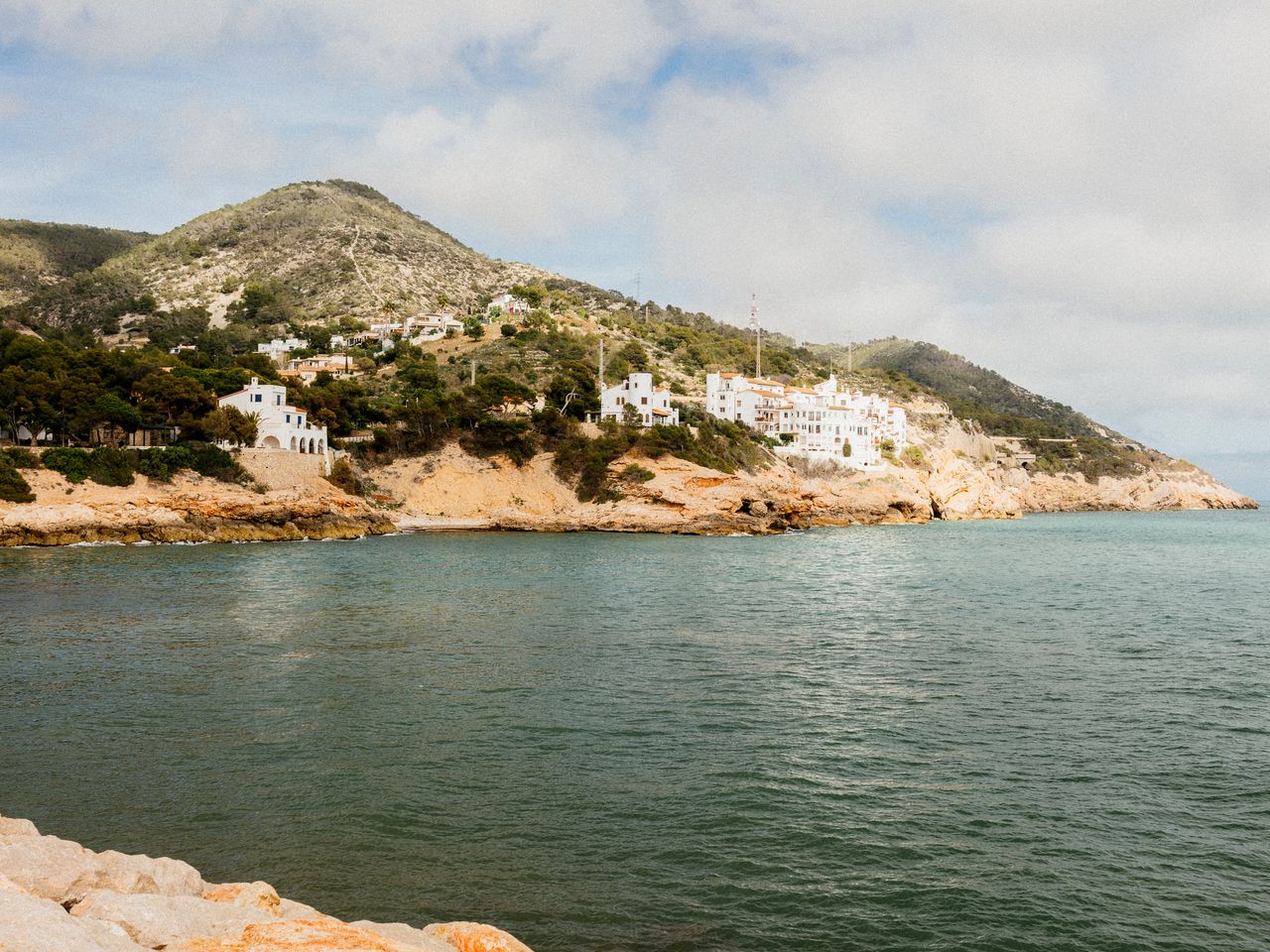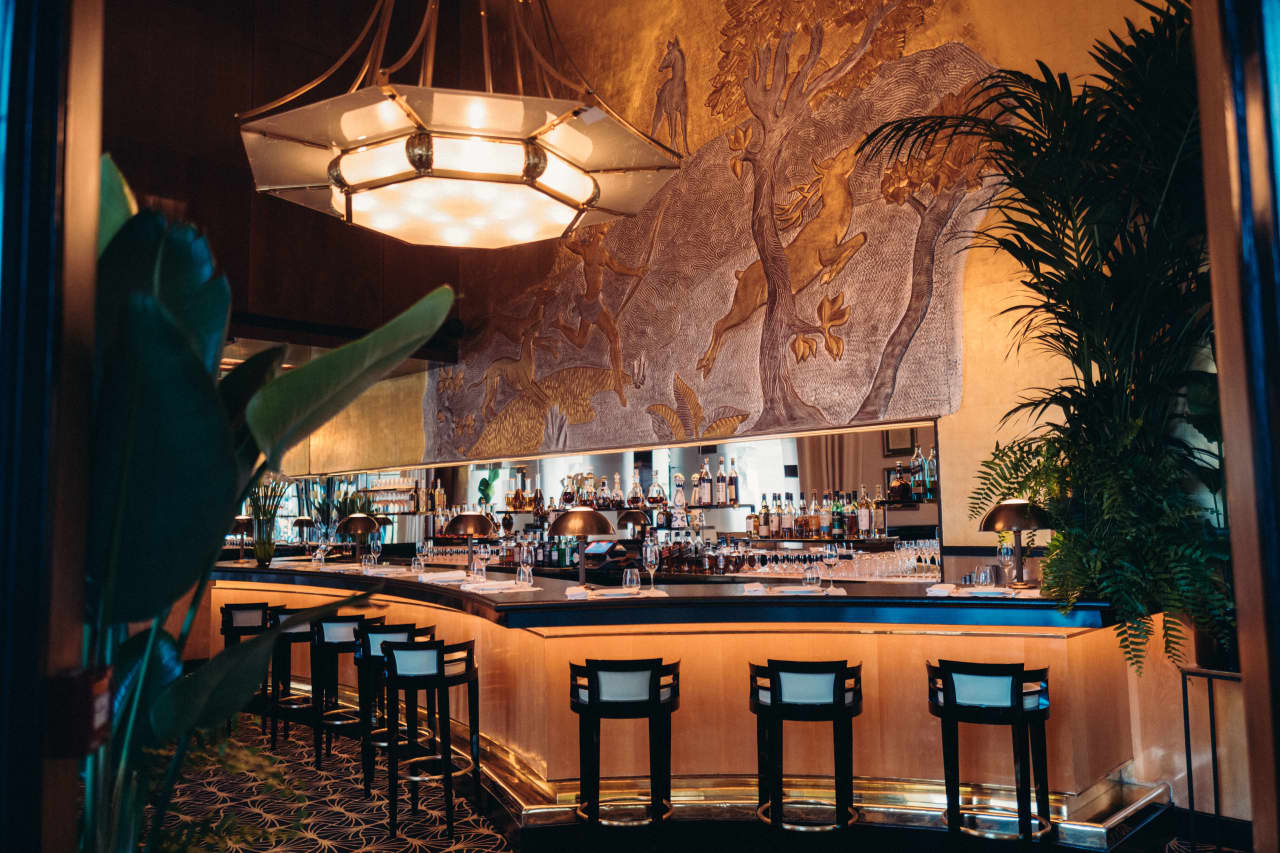The Pricey-Yet-Chill Resort Town of Sitges Is Luring American Buyers
Interest in the coastal Spanish town is booming, thanks to the rise of remote work, the area’s LGBTQ-friendly atmosphere and its proximity to Barcelona
In their post pandemic search for a European second home, Florida’s Martin and Patricia Tantow had a lot of boxes to tick.
The couple, who confined their search to the mainland Mediterranean coast, wanted sea views, walkable beach and town access, and a unit that was easy to renovate—or, as they call it, a “liveable fixer-upper.”
They found what they were looking for in Sitges, a Spanish resort town that had been under the radar for U.S. buyers and vacationers.
Sitges, with around 30,000 year-round residents, is known for its sandy beaches, 19th-century villas, 21st-century mansions, quaint historic centre and thriving residential real-estate market. Only a 25-minute drive from Barcelona’s international airport, the community is one of three select resorts that compete for the title of mainland Spain’s most expensive.
Home prices in Sitges average $457 per square foot, up 7.3% in the past year and 21% in the past five years, according to Idealista, a Spanish real estate website. Jesús Encinar, CEO and chairman of Idealista, says that Cadaqués, up the Catalan coast from Sitges and near France, is now at the top, with average prices in March reaching $575 per square foot. Málaga in the south of Spain is now at $458 per square foot, edging past Sitges.
Of the three, Sitges is the most convenient for trans-Atlantic air connections—and, local homeowners say, year-round charm. Smaller and less glitzy than Marbella, Sitges has temperate winters and hot summers, and it’s bigger and more accessible than remote whitewashed Cadaqués, where life dies down in the chillier offseason.
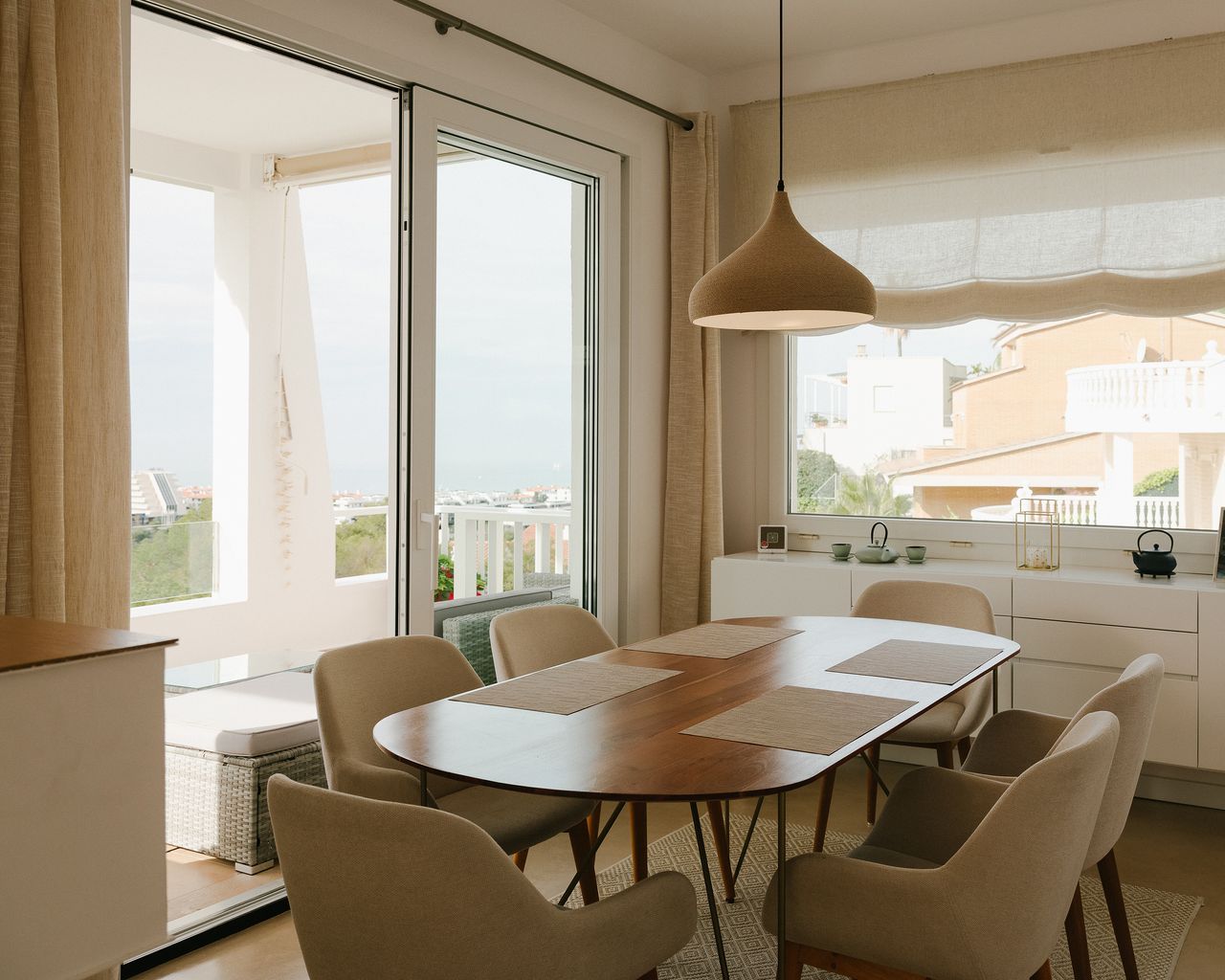
JOURNAL
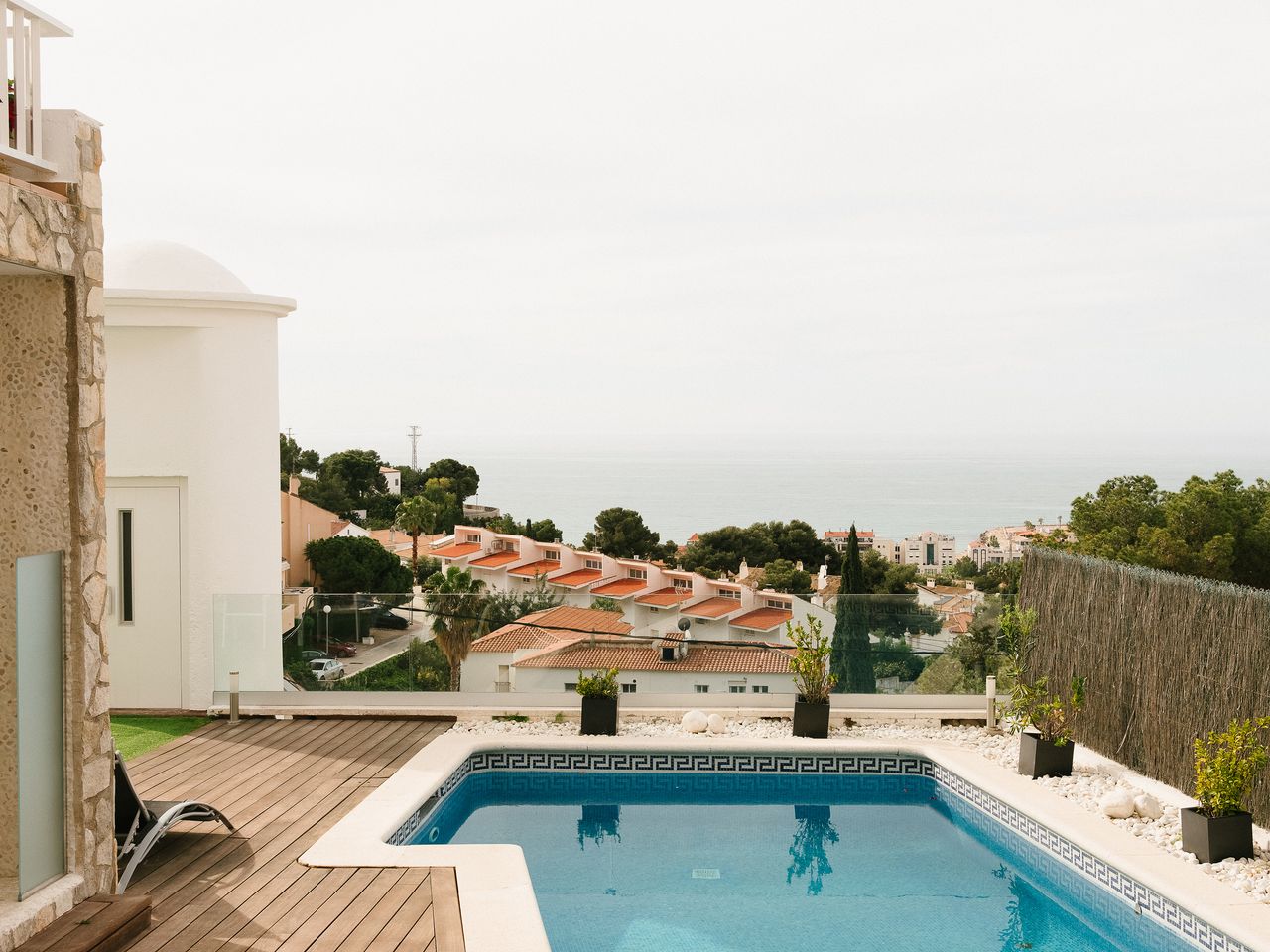
The Tantows paid 1.3 million euros (about $1.39 million) in July 2023 for a compact 2,300-square-foot Sitges home on a steep 1/5th-acre lot, offering prized southern exposures and expansive sea views. They plan to divide their time about equally between their primary Sarasota, Fla., home and Spain, where they can work remotely.
Able to live in the 1990s property while wrapping up the renovation, the couple has spent about $270,000 on refurbishments, and they plan to spend around $50,000 more on the four-bedroom home before they’re done.
“We painted inside and outside, and we opened things up a bit by breaking down some walls,” says Patricia Tantow, a marketing executive at an IT company. Other structural improvements included new solar panels, energy-efficient doors and windows, and insulation upgrades. They also decided to convert a lower-level gym into a home office and gaming area.
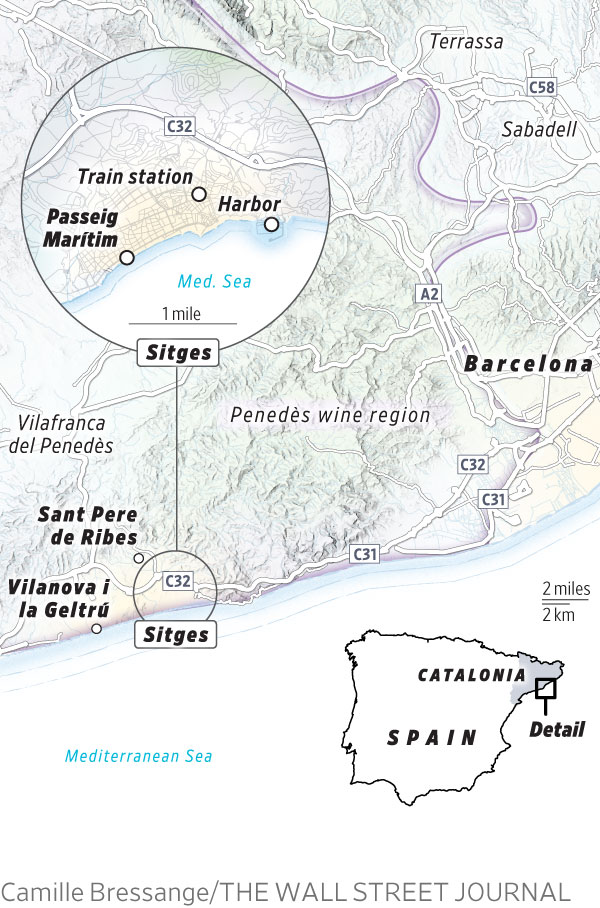
The couple, both 50, view the investment as a vacation home for now and a potential retirement home later. Patricia Tantow still seems a bit surprised at where they ended up.
“My dream was to buy in the south of France,” she recalls. “But then I came to Sitges and there was something special here. It’s very cute, but very diverse as well—you feel like you belong here. So I changed my mind about France and said, ‘Let’s try to make this happen.’”
Long popular with the LGBTQ community, Sitges traditionally attracts second-home buyers from Northern Europe, as well as elsewhere in Spain. Now the number of American buyers is rising, says the Tantows’ agency, Lucas Fox, where in-house sales to Americans doubled in 2023 compared with the year before. The rise of remote work and LGBTQ word-of-mouth are each helping to fuel interest, says the agency.
American visitors to the town are also increasing. Marina Norwell, of Oliver’s Travels, the U.K.-based villa-rental specialists, says inquiries from the U.S. quadrupled in 2023 from the year before.
Norwell says a top choice for villa-minded Americans is a 10-bedroom country house with a saltwater swimming pool, about 15 minutes from the centre of Sitges, with a high-season weekly rate of about $18,500. Norwell says it’s popular with larger groups.
Sitges is something of a paradox, say residents. Known for its freewheeling nightlife in high season, it becomes a quieter, family-friendly community the rest of the year. The Tantows, who relocated during the pandemic from San Francisco to Florida, said they have no qualms about letting their two children, 9 and 11, explore on their own—something they couldn’t imagine back in San Francisco.
A desirable setting to raise children was also on the minds of full-time Dutch residents Ben Aquina and his wife, Carmen Aquina. The couple moved to Sitges in 2015 from the Netherlands to give their two sons, then 12 and 13, an international experience, he says.
The family rented for two years “to make sure that everything would go well with the kids,” says Aquina, a 63-year-old retired businessman. Then he and his wife, now 57, paid about $2.8 million in 2017 for a 7,000-square-foot, four-bedroom house on a ½-acre lot in a gated community near the city’s premier golf course, Club de Golf Terramar.
They spent more than $3 million on a gut renovation of the three-level property, originally built in 2004, adding everything from a new kitchen and upstairs terrace to a new outdoor pool.
“We love Sitges,” says Ben Aquina. “Life is so nice; the climate is perfect.”
Now that their sons are attending universities in Amsterdam and Rotterdam, the couple has listed the home for $5.79 million, with Rachel Haslam of Lucas Fox handling the sale. They plan to downsize locally to an apartment, as well as spend more time back in Holland.
At their current asking price, the Aquinas would just about break even, but many Sitges lovers are willing to take a loss, says Jordi Carbonell, sales director for Barcelona’s surrounding areas at Engel & Völkers Spain.

Catalonia led the way in the industrialisation of Spain in the 19th century, and Sitges became a spot for Catalan magnates to build lavish summer villas, often in a style associated with architect Antoni Gaudí up the coast in Barcelona. Still expensive to buy, and often very expensive to modernise, they typically need a new kitchen and new air-conditioning system, and even a new roof, requiring a total investment of almost $10 million to $11 million, says Carbonell. New owners may never resell for that price, he adds, “but some people just love these properties.”
Carbonell says the highest square-foot prices can now be found on Passeig Maritim, the palm-lined boulevard bordering the beach. In 2023, Lucas Fox sold a 1,930-square-foot contemporary apartment on the boulevard’s continuation, Passeig de la Ribera, for $1.6 million, or $831 per square foot, far exceeding the resort’s average.
Both the Tantows and the Aquinas were drawn to the community’s proximity to Barcelona—“Sitges wouldn’t be Sitges without Barcelona,” says venture capitalist Martin Tantow, who says the family relies on direct flights from Miami and California. But they also use it as a getaway to the nearby Penedès wine region, home to Catalonia’s sparkling Cava wines.
Carbonell says Sitges-bound buyers who want more land often head up to Penedès, where luxury properties can come with stables and tennis courts. Meanwhile, budget-minded international buyers who want access to Sitges but more space for their euro are increasingly heading a 15-minute drive away to nearby communities, Sant Pere de Ribes, closer to the vineyards, and Vilanova i la Geltrú, a small city down the coast, where “you can spend 450,000 euros on a home but still enjoy Sitges on the weekends,” he says.
Mary Anne Gibbons and Michael Healy, a couple in their early 70s from Washington, D.C., recently capped off an Iberian holiday with a first-time visit to Sitges, opting for an Oliver’s Travels villa near Sant Pere de Ribes, where they paid around $1,400 in total for four nights in a three-bedroom renovated stone house.
Intending to use the setting as a base for discovering Barcelona, Gibbons says they opted most days to hang out in Sitges instead.
“It’s a really cute town with a very relaxed atmosphere,” says the attorney, who enjoyed the seafront promenade and quaint shops and cafes. “Very chill.”
 Copyright 2020, Dow Jones & Company, Inc. All Rights Reserved Worldwide. LEARN MORE
Copyright 2020, Dow Jones & Company, Inc. All Rights Reserved Worldwide. LEARN MORE
This stylish family home combines a classic palette and finishes with a flexible floorplan
Just 55 minutes from Sydney, make this your creative getaway located in the majestic Hawkesbury region.
Ahead of the Games, a breakdown of the city’s most desirable places to live
PARIS —Paris has long been a byword for luxurious living. The traditional components of the upscale home, from parquet floors to elaborate moldings, have their origins here. Yet settling down in just the right address in this low-rise, high-density city may be the greatest luxury of all.
Tradition reigns supreme in Paris real estate, where certain conditions seem set in stone—the western half of the city, on either side of the Seine, has long been more expensive than the east. But in the fashion world’s capital, parts of the housing market are also subject to shifting fads. In the trendy, hilly northeast, a roving cool factor can send prices in this year’s hip neighborhood rising, while last year’s might seem like a sudden bargain.
This week, with the opening of the Olympic Games and the eyes of the world turned toward Paris, The Wall Street Journal looks at the most expensive and desirable areas in the City of Light.
The Most Expensive Arrondissement: the 6th
Known for historic architecture, elegant apartment houses and bohemian street cred, the 6th Arrondissement is Paris’s answer to Manhattan’s West Village. Like its New York counterpart, the 6th’s starving-artist days are long behind it. But the charm that first wooed notable residents like Gertrude Stein and Jean-Paul Sartre is still largely intact, attracting high-minded tourists and deep-pocketed homeowners who can afford its once-edgy, now serene atmosphere.
Le Breton George V Notaires, a Paris notary with an international clientele, says the 6th consistently holds the title of most expensive arrondissement among Paris’s 20 administrative districts, and 2023 was no exception. Last year, average home prices reached $1,428 a square foot—almost 30% higher than the Paris average of $1,100 a square foot.
According to Meilleurs Agents, the Paris real estate appraisal company, the 6th is also home to three of the city’s five most expensive streets. Rue de Furstemberg, a secluded loop between Boulevard Saint-Germain and the Seine, comes in on top, with average prices of $2,454 a square foot as of March 2024.
For more than two decades, Kyle Branum, a 51-year-old attorney, and Kimberly Branum, a 60-year-old retired CEO, have been regular visitors to Paris, opting for apartment rentals and ultimately an ownership interest in an apartment in the city’s 7th Arrondissement, a sedate Left Bank district known for its discreet atmosphere and plutocratic residents.
“The 7th was the only place we stayed,” says Kimberly, “but we spent most of our time in the 6th.”
In 2022, inspired by the strength of the dollar, the Branums decided to fulfil a longstanding dream of buying in Paris. Working with Paris Property Group, they opted for a 1,465-square-foot, three-bedroom in a building dating to the 17th century on a side street in the 6th Arrondissement. They paid $2.7 million for the unit and then spent just over $1 million on the renovation, working with Franco-American visual artist Monte Laster, who also does interiors.
The couple, who live in Santa Barbara, Calif., plan to spend about three months a year in Paris, hosting children and grandchildren, and cooking after forays to local food markets. Their new kitchen, which includes a French stove from luxury appliance brand Lacanche, is Kimberly’s favourite room, she says.
Another American, investor Ashley Maddox, 49, is also considering relocating.
In 2012, the longtime Paris resident bought a dingy, overstuffed 1,765-square-foot apartment in the 6th and started from scratch. She paid $2.5 million and undertook a gut renovation and building improvements for about $800,000. A centrepiece of the home now is the one-time salon, which was turned into an open-plan kitchen and dining area where Maddox and her three children tend to hang out, American-style. Just outside her door are some of the city’s best-known bakeries and cheesemongers, and she is a short walk from the Jardin du Luxembourg, the Left Bank’s premier green space.
“A lot of the majesty of the city is accessible from here,” she says. “It’s so central, it’s bananas.” Now that two of her children are going away to school, she has listed the four-bedroom apartment with Varenne for $5 million.
The Most Expensive Neighbourhoods: Notre-Dame and Invalides
Garrow Kedigian is moving up in the world of Parisian real estate by heading south of the Seine.
During the pandemic, the Canada-born, New York-based interior designer reassessed his life, he says, and decided “I’m not going to wait any longer to have a pied-à-terre in Paris.”
He originally selected a 1,130-square-foot one-bedroom in the trendy 9th Arrondissement, an up-and-coming Right Bank district just below Montmartre. But he soon realised it was too small for his extended stays, not to mention hosting guests from out of town.
After paying about $1.6 million in 2022 and then investing about $55,000 in new decor, he put the unit up for sale in early 2024 and went house-shopping a second time. He ended up in the Invalides quarter of the 7th Arrondissement in the shadow of one Paris’s signature monuments, the golden-domed Hôtel des Invalides, which dates to the 17th century and is fronted by a grand esplanade.
His new neighbourhood vies for Paris’s most expensive with the Notre-Dame quarter in the 4th Arrondissement, centred on a few islands in the Seine behind its namesake cathedral. According to Le Breton, home prices in the Notre-Dame neighbourhood were $1,818 a square foot in 2023, followed by $1,568 a square foot in Invalides.
After breaking even on his Right Bank one-bedroom, Kedigian paid $2.4 million for his new 1,450-square-foot two-bedroom in a late 19th-century building. It has southern exposures, rounded living-room windows and “gorgeous floors,” he says. Kedigian, who bought the new flat through Junot Fine Properties/Knight Frank, plans to spend up to $435,000 on a renovation that will involve restoring the original 12-foot ceiling height in many of the rooms, as well as rescuing the ceilings’ elaborate stucco detailing. He expects to finish in 2025.
Over in the Notre-Dame neighbourhood, Belles demeures de France/Christie’s recently sold a 2,370-square-foot, four-bedroom home for close to the asking price of about $8.6 million, or about $3,630 a square foot. Listing agent Marie-Hélène Lundgreen says this places the unit near the very top of Paris luxury real estate, where prime homes typically sell between $2,530 and $4,040 a square foot.
The Most Expensive Suburb: Neuilly-sur-Seine
The Boulevard Périphérique, the 22-mile ring road that surrounds Paris and its 20 arrondissements, was once a line in the sand for Parisians, who regarded the French capital’s numerous suburbs as something to drive through on their way to and from vacation. The past few decades have seen waves of gentrification beyond the city’s borders, upgrading humble or industrial districts to the north and east into prime residential areas. And it has turned Neuilly-sur-Seine, just northwest of the city, into a luxury compound of first resort.
In 2023, Neuilly’s average home price of $1,092 a square foot made the leafy, stately community Paris’s most expensive suburb.
Longtime residents, Alain and Michèle Bigio, decided this year is the right time to list their 7,730-square-foot, four-bedroom townhouse on a gated Neuilly street.
The couple, now in their mid 70s, completed the home in 1990, two years after they purchased a small parcel of garden from the owners next door for an undisclosed amount. Having relocated from a white-marble château outside Paris, the couple echoed their previous home by using white- and cream-coloured stone in the new four-story build. The Bigios, who will relocate just back over the border in the 16th Arrondissement, have listed the property with Emile Garcin Propriétés for $14.7 million.
The couple raised two adult children here and undertook upgrades in their empty-nester years—most recently, an indoor pool in the basement and a new elevator.
The cool, pale interiors give way to dark and sardonic images in the former staff’s quarters in the basement where Alain works on his hobby—surreal and satirical paintings, whose risqué content means that his wife prefers they stay downstairs. “I’m not a painter,” he says. “But I paint.”
The Trendiest Arrondissement: the 9th
French interior designer Julie Hamon is theatre royalty. Her grandfather was playwright Jean Anouilh, a giant of 20th-century French literature, and her sister is actress Gwendoline Hamon. The 52-year-old, who divides her time between Paris and the U.K., still remembers when the city’s 9th Arrondissement, where she and her husband bought their 1,885-square-foot duplex in 2017, was a place to have fun rather than put down roots. Now, the 9th is the place to do both.
The 9th, a largely 19th-century district, is Paris at its most urban. But what it lacks in parks and other green spaces, it makes up with nightlife and a bustling street life. Among Paris’s gentrifying districts, which have been transformed since 2000 from near-slums to the brink of luxury, the 9th has emerged as the clear winner. According to Le Breton, average 2023 home prices here were $1,062 a square foot, while its nearest competitors for the cool crown, the 10th and the 11th, have yet to break $1,011 a square foot.
A co-principal in the Bobo Design Studio, Hamon—whose gut renovation includes a dramatic skylight, a home cinema and air conditioning—still seems surprised at how far her arrondissement has come. “The 9th used to be well known for all the theatres, nightclubs and strip clubs,” she says. “But it was never a place where you wanted to live—now it’s the place to be.”
With their youngest child about to go to college, she and her husband, 52-year-old entrepreneur Guillaume Clignet, decided to list their Paris home for $3.45 million and live in London full-time. Propriétés Parisiennes/Sotheby’s is handling the listing, which has just gone into contract after about six months on the market.
The 9th’s music venues were a draw for 44-year-old American musician and piano dealer, Ronen Segev, who divides his time between Miami and a 1,725-square-foot, two-bedroom in the lower reaches of the arrondissement. Aided by Paris Property Group, Segev purchased the apartment at auction during the pandemic, sight unseen, for $1.69 million. He spent $270,000 on a renovation, knocking down a wall to make a larger salon suitable for home concerts.
During the Olympics, Segev is renting out the space for about $22,850 a week to attendees of the Games. Otherwise, he prefers longer-term sublets to visiting musicians for $32,700 a month.
Most Exclusive Address: Avenue Junot
Hidden in the hilly expanses of the 18th Arrondissement lies a legendary street that, for those in the know, is the city’s most exclusive address. Avenue Junot, a bucolic tree-lined lane, is a fairy-tale version of the city, separate from the gritty bustle that surrounds it.
Homes here rarely come up for sale, and, when they do, they tend to be off-market, or sold before they can be listed. Martine Kuperfis—whose Paris-based Junot Group real-estate company is named for the street—says the most expensive units here are penthouses with views over the whole of the city.
In 2021, her agency sold a 3,230-square-foot triplex apartment, with a 1,400-square-foot terrace, for $8.5 million. At about $2,630 a square foot, that is three times the current average price in the whole of the 18th.
Among its current Junot listings is a 1930s 1,220-square-foot townhouse on the avenue’s cobblestone extension, with an asking price of $2.8 million.
This stylish family home combines a classic palette and finishes with a flexible floorplan
Just 55 minutes from Sydney, make this your creative getaway located in the majestic Hawkesbury region.









